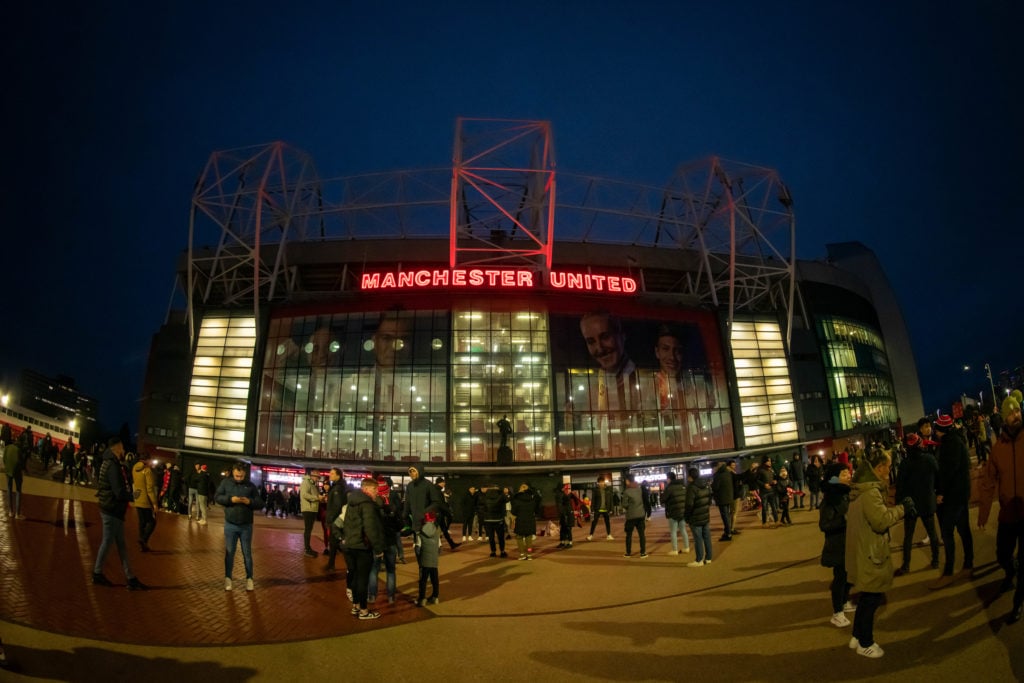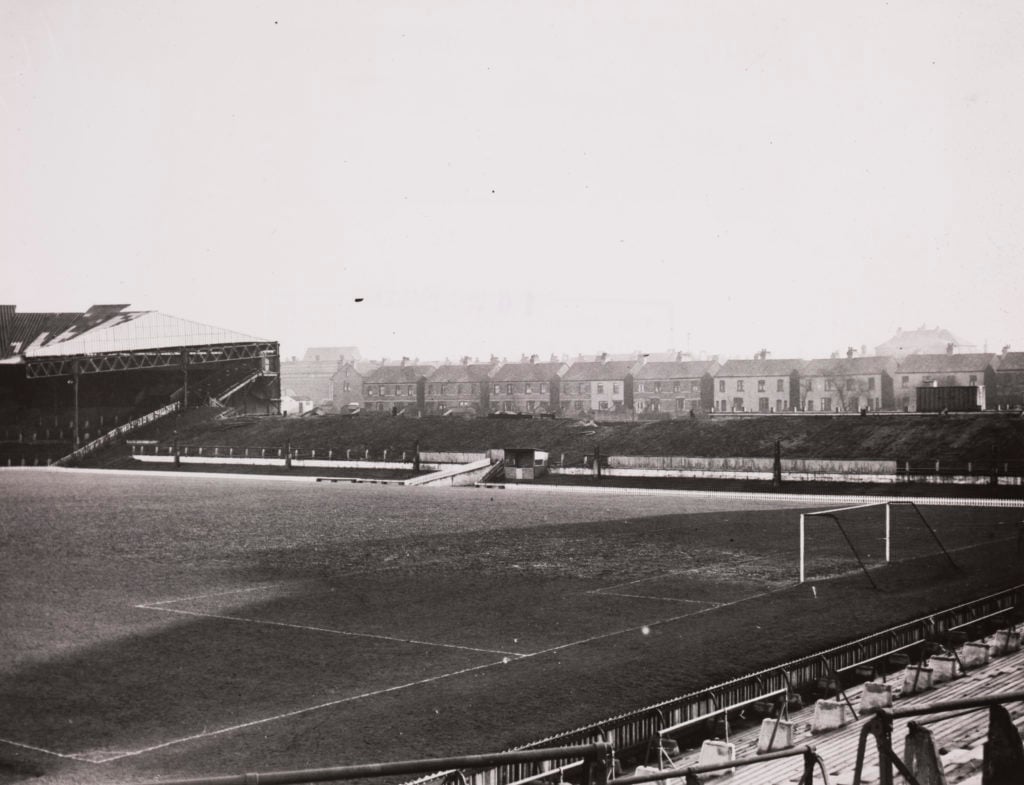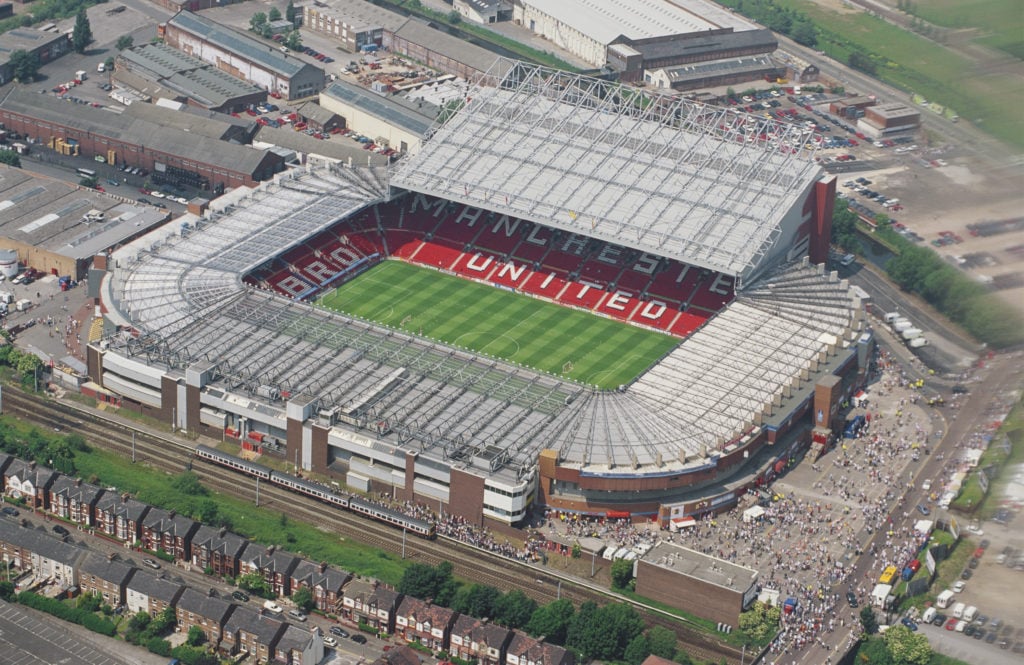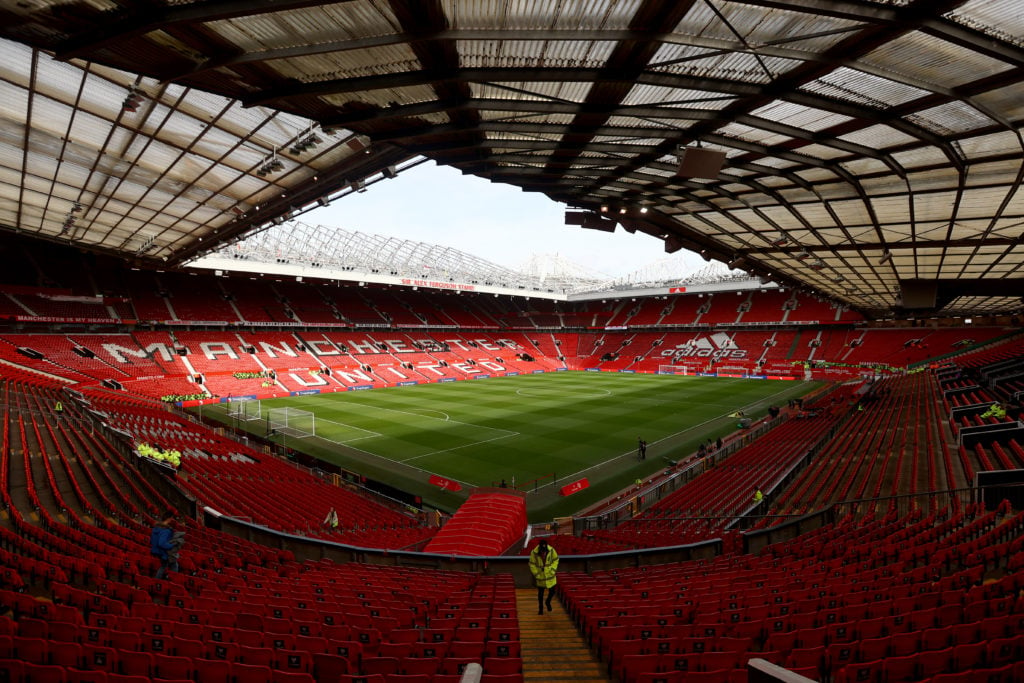| Stadium Name: | Old Trafford |
| Year Opened: | 1910 |
| Capacity: | 74,310 |
| Nickname: | The Theatre of Dreams |

History of the stadium:
Manchester United have called Old Trafford their home since 1910 following a move to their third stadium since being founded. The Red Devils initially called North Road their base between their formation in 1878 and 1893 before switching to Bank Street through to 1910.
Old Trafford has undergone a number of modifications and redevelopments since the stadia first hosted a Manchester United match. But the current edition of the ground has a 74,310-seated capacity following the club’s last major renovation works to the ground back in 2006.
Manchester United first broke ground for the construction of Old Trafford in 1909 and took just one year to build the stadium. Liverpool would help the Red Devils kick off their new era at the ground on February 19, 1910. But the Reds returned to Merseyside after winning 4-3.
The original version of the ground could host slightly more than 80,000 spectators and only had one covered seating stand. Old Trafford’s other terraces were open-air areas before a roof was installed over the United Road stand in 1934 as part of the first key modifications.

WWII forced Manchester United to leave Old Trafford
However, the stadium’s proximity to the Trafford Park industrial estate saw it sustain major damages during World War II. Manchester United spent eight years rebuilding Old Trafford owing to the limitations on resources in the early post-war years before returning in 1949.
Manchester City let Manchester United ground share their Maine Road stadium whilst they rebuilt Old Trafford. The Red Devils would eventually return home on August 24, 1949 with the visit of Bolton Wanderers. But they, again, suffered a 3-0 defeat to begin their next era.
The following 30 years saw Manchester United undertake occasional redevelopment works to Old Trafford. These included the addition of roofing to the remaining stands but the use of supports obstructed the views for spectators. So, the mid-1960s featured a major revamp.
Manchester United replaced the north and east stands but needed to redesign Old Trafford in the 1970s and 1980s. These works reduced the capacity of the ground to 60,000 before a further renovation project moved the capacity to 44,000 following the Hillsborough disaster.
Old Trafford’s capacity dwindled with the move to an all-seated stadium which saw the club demolish the Stretford End terraces. But a new North Stand in 1995 returned the capacity to around 56,000 ahead of Euro 1996. A total of five games would take place at the stadium.

Manchester United continued to rebuild the capacity
Manchester United continued to rebuild the capacity of their stadium with further works to Old Trafford in the following years. The club increased the capacity to around 68,000 with a second tier added to the east and west stands. Old Trafford then hit its current limit in 2006.
The addition of upper tiers to the corners of the North Stand brought Old Trafford up to its current 74,310 capacity. Manchester United also later renamed the stand in 2011 to the Sir Alex Ferguson Stand in honour of the club’s legendary former manager’s tenure at the helm.
Plans to increase Old Trafford’s capacity further are limited owing to the railway line behind the South Stand. But its current limit is the largest for a club stadium in the United Kingdom with Wembley (90,000) and Twickenham (82,000) being the only stadia with a greater limit.
How to get to Old Trafford:
Old Trafford is easily accessible for fans due to Manchester United’s stadium being located just two miles away from the city centre. Manchester Piccadilly Station is also three miles away from the ground, while a Metro system connects the train station from the stadium.
The Metrolink offers a 15-minute journey from Manchester Piccadilly Station to Old Trafford Station. It is then a five-minute walk from the stop to the ground. A number of special train services are also in place on matchdays from most of the city centre stations to Old Trafford.
If travelling by car, fans can get to Old Trafford by turning off the M60 at junction 7&8 and following Chester Road (A56) northbound for around two miles. The ground is on Sir Matt Busby Way, but access to the road is closed on matchdays and the area is extremely busy.
Alternatively, Manchester United provide free cycle racks for fans who get to Old Trafford by bicycle. These are situated at the N2 (Sir Alex Ferguson Stand), E2 (East Stand) and W2 (West Stand) car parks. Authorities will remove any bicycles that are left in any other areas.
Use the postcode M16 0RA for getting to Old Trafford on a matchday or M16 0SZ on a non-matchday.

Stadium tour and museum info:
Manchester United run tours of Old Trafford each day of the week except matchdays. These provide fans with the chance to experience the stadium with access to the players’ tunnel, walk beside the pitch and visit the dugouts. The Ability Platform also offers a viewing area.
Alongside the stadium tour at Old Trafford, Manchester United’s experience also features the club’s museum. Tours of the ground run around every 30 minutes and last around 70, not including any additional time that visitors might also decide to spend in the museum.
Pre-booking is not essential but online prices offer cheaper access to the stadium tours at Old Trafford. Parking is also free of charge in the E2 car park using the postcode M16 0SZ.
| Prices: | |
| Adult: | From £25 when you pre-book |
| Junior/Concession: | From £18 |
| Education Groups: | From £5 |
| Opening times: | |
| Friday – Saturday: | 09:30 – 17:00 |
| Sunday – Thursday: | 09:30 – 16:00 |
Address:
Old Trafford: Sir Matt Busby Way, Manchester, M16 0RA, United Kingdom